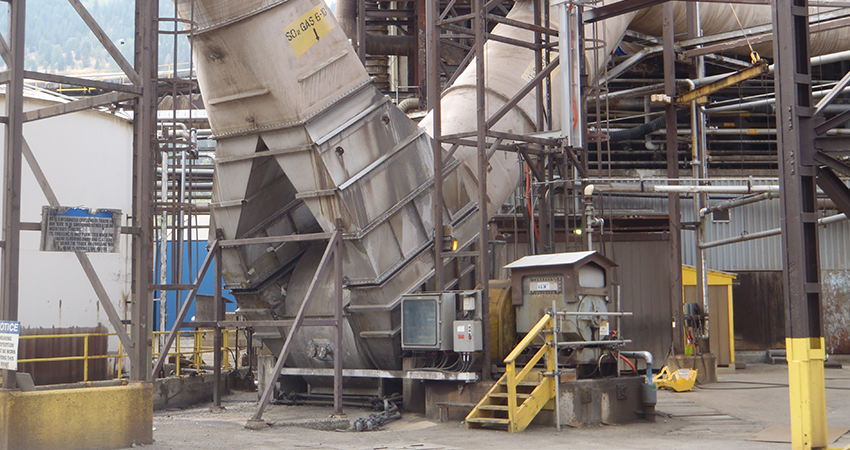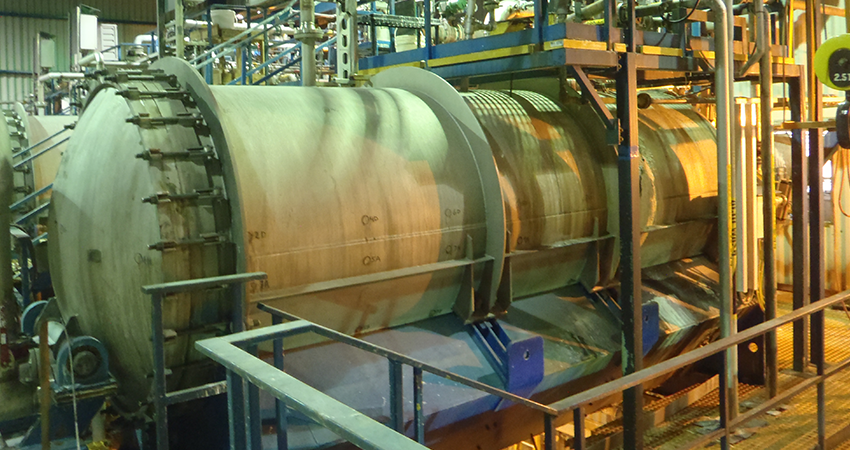Technology has the potential to transform many aspects of our business. Here, Connect looks at two examples of how Teck teams and employees are applying it towards more efficient processes, improving best practices and our bottom line.
Monitoring with Mtell
Artificial Intelligence (AI) is making waves in the technology industry, with AI being used to power voice-activated assistants, develop some of the first examples of self-driving cars, and offer professional advice to lawyers and doctors. The first wave of AI is now rolling into mining, and Trail Operations is looking to capitalize on its ability to predict the future.
The Idea
Trail’s reliability team uses tracking technology to detect potential failures in equipment in order to stay on top of preventative maintenance. When a failure does occur, it’s the team’s job to find the cause and implement solutions to prevent it from happening again.
They recognized there was an opportunity to improve preventative maintenance by using information from Trail’s historian, a system that monitors process signals. So in 2011, they began using a software—that utilized AI—with the goal of better monitoring and predicting equipment performance.
Above: Equipment at Trail Operations that has Mtell applied to it.
How It Works
Enter Mtell, the software utilized at Trail that uses ‘machine learning’, a form of AI, to track and predict equipment failure, and what the process variable signature is leading into a failure. Using AI, Mtell takes a snapshot of process signal data to learn what’s normal. The software then stores the information, providing insight into what might lead to a future failure, and triggers a warning when similar scenarios arise, when compared against real time data. Mtell also now has the ability to read process signals and calculate how much runtime a piece of equipment has left, and even automatically file a work order.
Benefitting the Bottom Line
Financially, the system has benefited Trail Operations in a cost avoidance of approximately $2.1 million in 2016 and $1.3 million this year to date. Using Mtell is even more beneficial in terms of improving safety and environmental performance, as potential risks are noticed well before they become dangerous.
Digging into Data
Big data has the power to transform mining—when properly compiled, analyzed and evaluated, the information collected can lead to competitive advantages and better operational decisions.
With this in mind, Mohammad Babaei, Senior Technical Analyst, IS+T Operational Technology, was inspired to find a way to take data related to ‘digability’—the level of resistance in rock material when digging—and use it to improve our mining process.
Above: Mohammad Babaei, Senior Technical Analyst, IS+T Operational Technology.
The Idea
Digability is fundamentally connected to blasting and drilling, functions of the open pit mining process used to fracture rock and access mineral deposits. The quality of blasting and drilling is important—when the result is rock material with poor digability that’s difficult to dig, it means higher power consumption, more wear and tear on loading machines, and lower loading and hauling efficiency.
So, Mohammed set his focus how to collect and use digability data to help design blasts that maximize shovel productivity.
How It Works
While working at Elkview Operations as part of his PhD program in mining engineering, Mohammed developed a way to gather real-time data on various factors that contribute to digability through sensors attached to mining equipment. The data then goes through a program for analysis, which provides real time feedback on the digability of the material. This in turn informs blasting and drilling techniques to optimize digability and ultimately increase the efficiency of
our operations.
Benefitting the Bottom Line
As a result, Elkview has improved shovel productivity, reduced the amount of explosives used by 4 million kilograms, and saved over $1 million per year. The technology is now being expanded to Line Creek and Greenhills operations.





